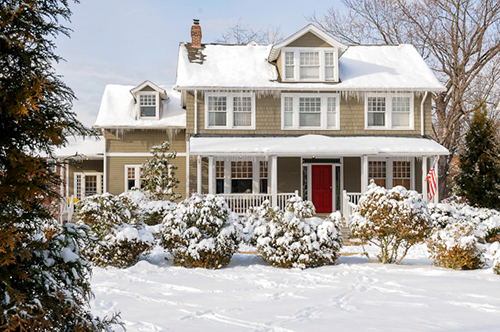Tips for Winter White Snow
January 1, 2014 by Marie Joabar
 Snow lovers delight! We’re in for a measurable snowfall so get your gear ready and plan to have a blast photographing your favorite subjects in it.
Snow lovers delight! We’re in for a measurable snowfall so get your gear ready and plan to have a blast photographing your favorite subjects in it.
Capture your kids as a blur of bright jackets and hats sledding down a hill, shoot magical winter landscape scenes by framing a nearby stream or wooded trail still covered with freshly fallen snow, or head downtown and capture famous landmarks set off against it.
No matter what your favorite subject, exposing for snow can be tricky. Our camera’s light meter is easily fooled by the brightness and underexposes snow scenes resulting in dark photos with washed out, gray looking snow. This is because the camera’s light meter is designed to measure the amount of reflected light from a subject and make it medium gray. But since bright subjects such as snow reflect twice as much light as medium gray, the camera overcompensates and underexposes the scene.
It can be pretty easy to correct for this though. To capture the ‘white’ snow and avoid getting images that are underexposed and washed out, try these tips.
First, set a low ISO. Try ISO 50, 100 or even 200 if that is as low as your camera can go.
 If using Aperture or Shutter Priority, or in the Program Mode:
If using Aperture or Shutter Priority, or in the Program Mode:
* Use the Exposure Compensation (represented by a +/- symbol) and turn the dial to the + direction by 1 to 2 full stops. (You’ll see 0.3 for one third stop, 0.7 for two thirds stop, 1.0 for one full stop and so on.)
* Or, you could use Exposure Lock. Aim at something neutral in tone, ie: something tan or grey, or a medium tone blue sky, then press the exposure lock button and keep the pressure on it until you recompose and depress the shutter. (Look for an AEL button on your camera body, on some Canon’s look for the asterisk button. See your camera manual to locate the Exposure Lock button on your camera.)
In full Manual Mode, simply change the shutter speed or aperture until the exposure scale in the bottom of the viewfinder reflects 1 to 2 stops over exposure. Spot metering off the snow may make it easier to get the correct exposure in full manual.
Try bracketing three exposures, each one stop apart, to ensure you get one that is properly exposed.
Enable your highlight alert setting if your camera offers it (usually in the Playback menu settings) to ensure you don’t go too far and overexpose your highlights.
Use your histogram as a helpful tool to ensure you haven’t overexposed the highlights. Snowy scenes will show most of the data in the right side of the histogram which is fine, just check that the mountain range comes down within the graph and doesn’t hit the right side which would indicate overexposure. If this happens, change the exposure to take away a bit of light and retake the photo.
If you are not yet shooting in the manual exposure modes, look to see if your camera has a Snow/Sand setting (usually found as one of the Scene modes). This setting is designed to properly expose for scenes with subjects that reflect more light than normal.
It’s always a bonus to see the sun following a snowfall so don’t miss the opportunity if it presents itself. On a sunny day when the snow is fresh, pretty much anything we frame up can seem magical.
 Look for interesting shadows and silhouettes. In the winter, patterns and shapes become more visible simply because of the lack of color. It’s also a great time for black and white photography. It’s a fun way to take an OK image and kick in drama and creativity with some black and white treatment.
Look for interesting shadows and silhouettes. In the winter, patterns and shapes become more visible simply because of the lack of color. It’s also a great time for black and white photography. It’s a fun way to take an OK image and kick in drama and creativity with some black and white treatment.
Winter is upon and it’s a bonus when there’s snow so get out there and enjoy it. Who knows when we’ll see it again!
